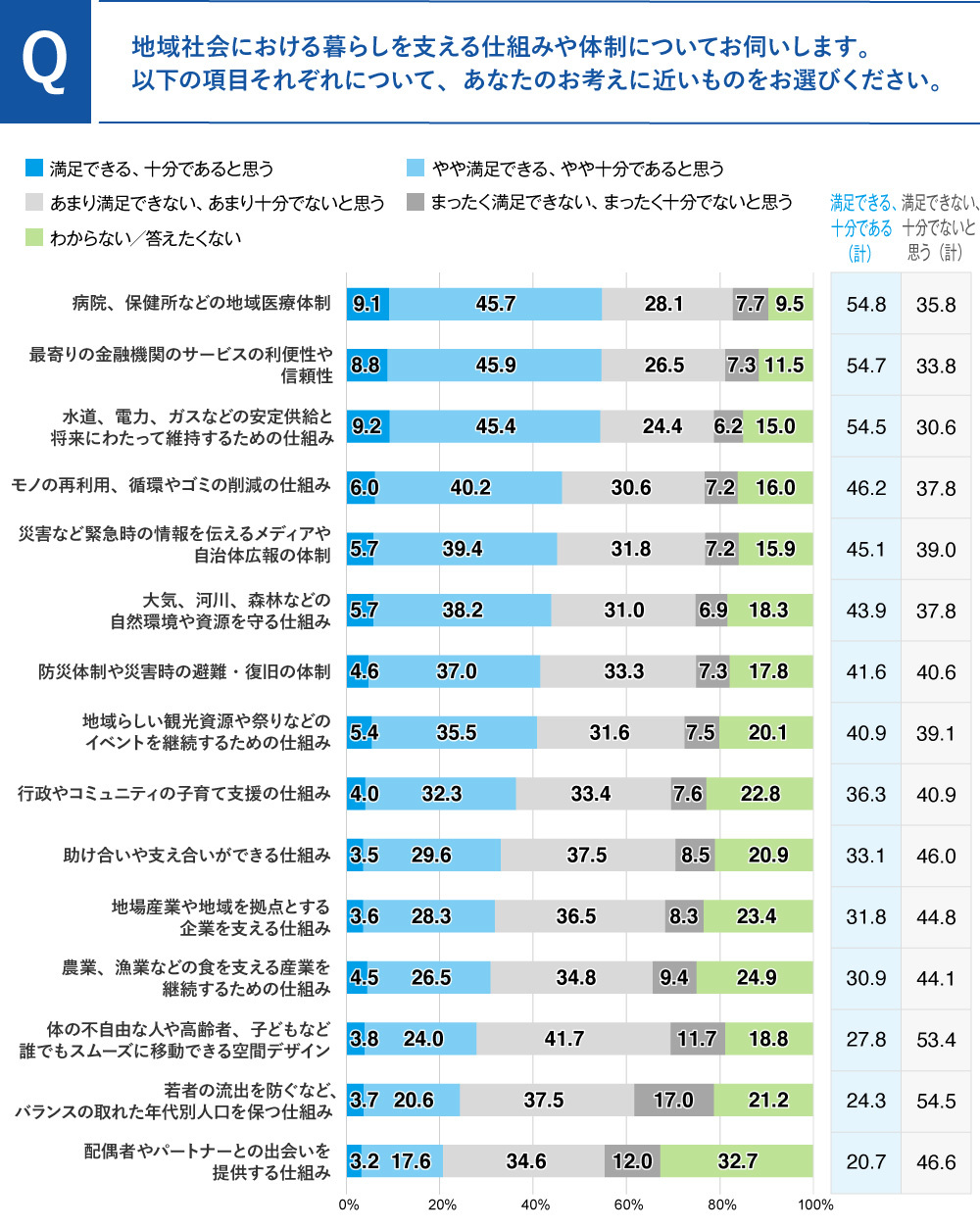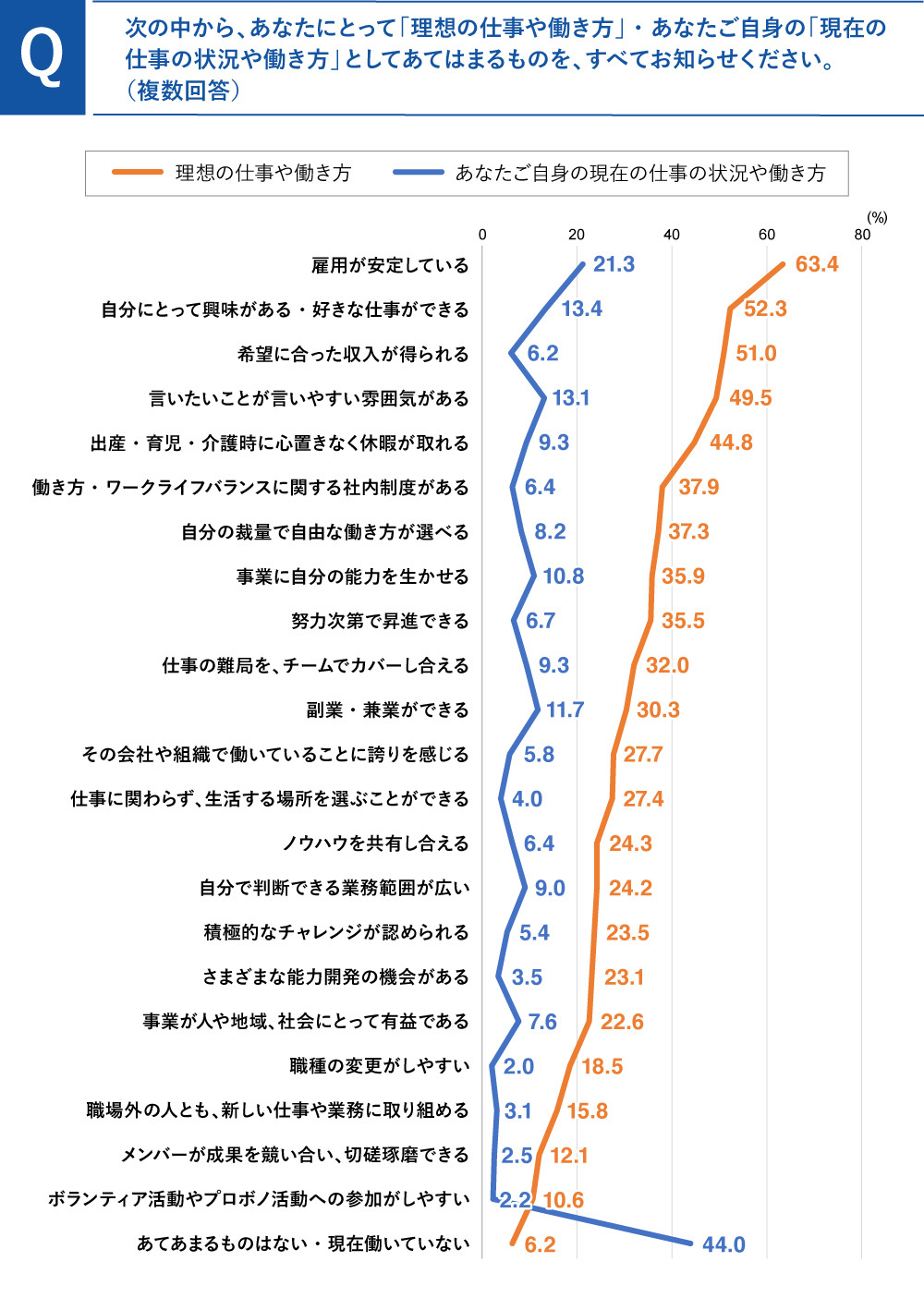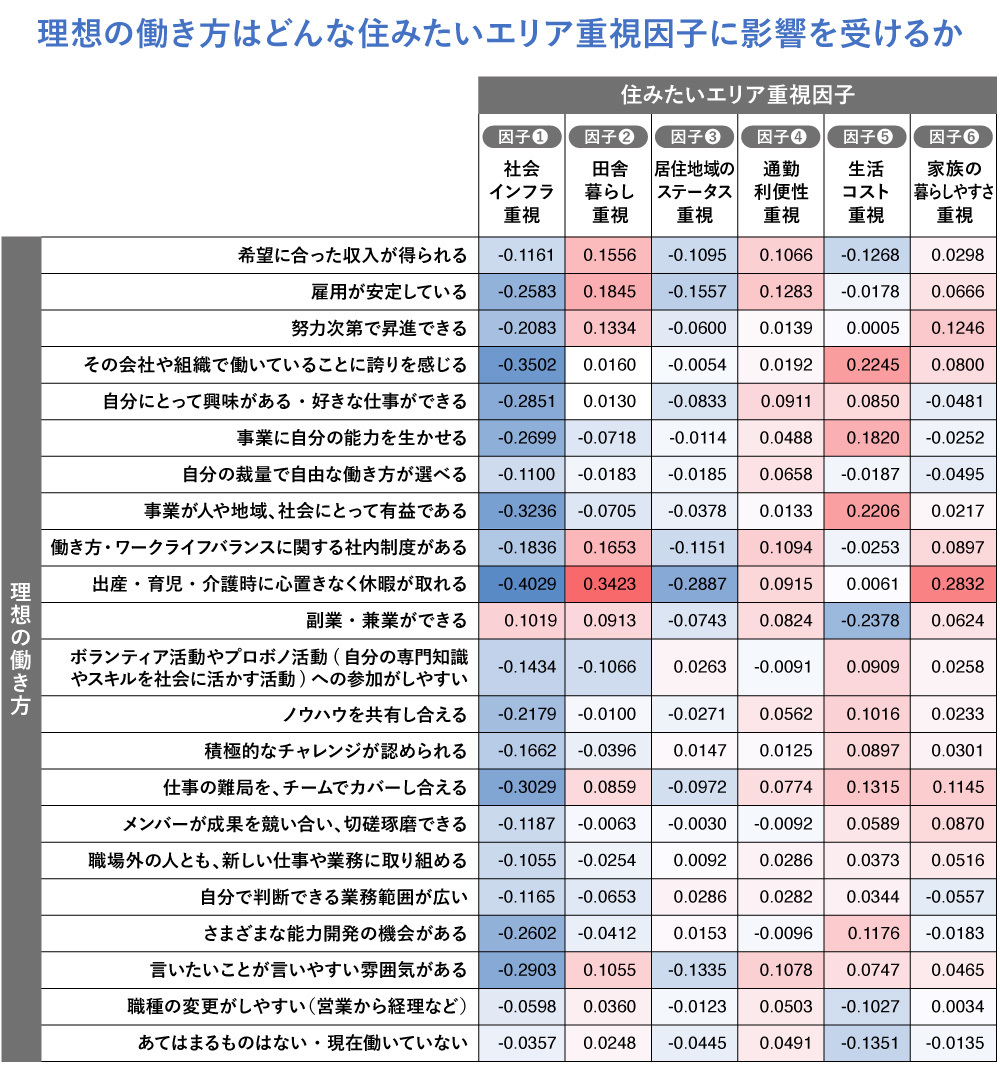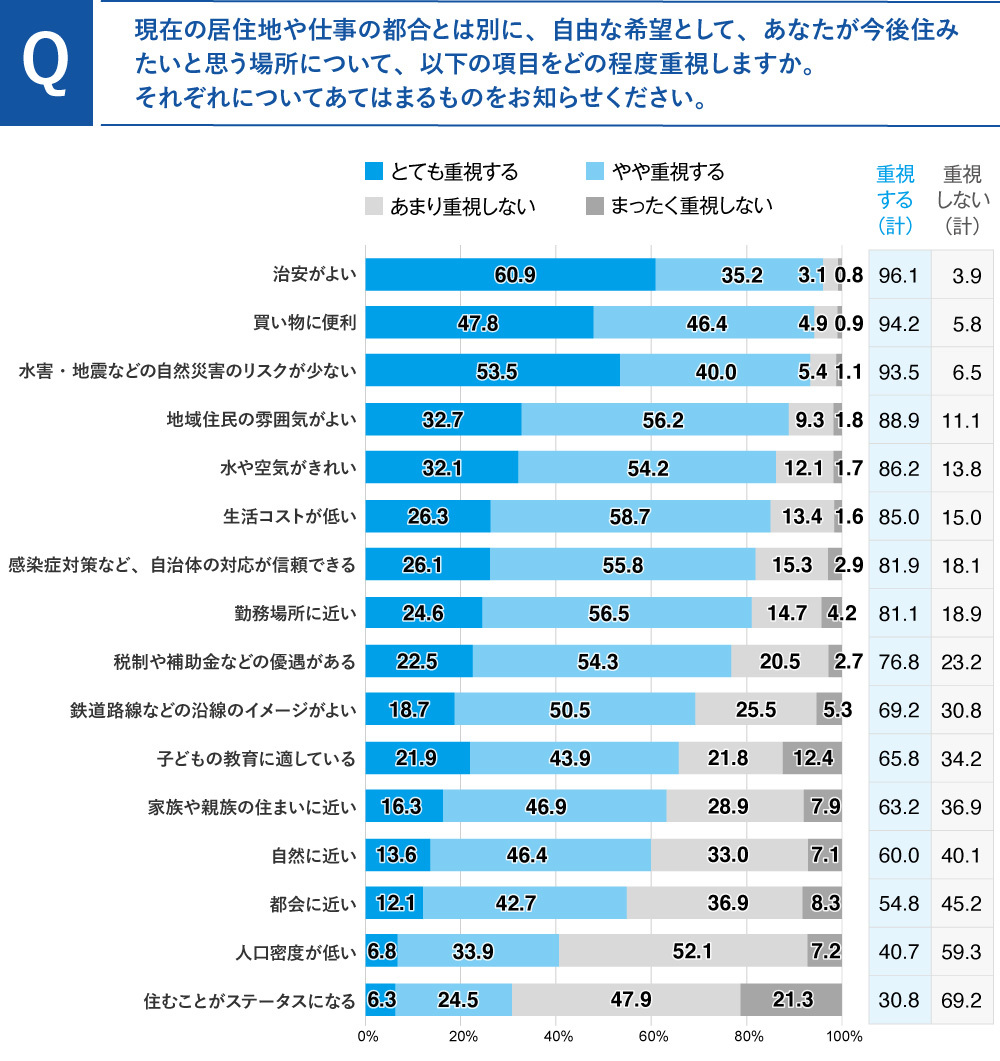DENTSU SOKEN INC. and Dentsu Future Forecasting Support Lab conducted the "Quality of Society Annual Survey 2021" in October 2021, targeting 12,000 men and women nationwide, under the supervision of Professor Yasufumi Shibauchi of Tokyo Keizai University. This survey, which aims to understand people's awareness and values regarding society, began its first iteration in December 2019, making this the third survey. Plans are in place to continue collecting and accumulating data on a regular basis.
About the Future Business Creation Research Institute
https://dentsumirai.com/
In the first installment of this series, we introduced how the social change brought about by the pandemic—the widespread adoption of telework—has significantly influenced preferences regarding work styles and living locations. We also discussed the need for societal initiatives to support these new attitudes and values among people, and to connect them to hope for the future.
This time, we address the question of "how to align work styles and living arrangements with societal changes" – a proposition that was scarcely considered just a few years ago. Based on analyses from several angles, we will discuss topics such as "what kind of community development should we pursue in the future?"
Tokyo's Population Declines for First Time in 26 Years: Changes in Desired Residential Areas and Work Styles
In January 2022, Tokyo announced its first population decline in 26 years. Before the pandemic, Tokyo consistently saw more people moving in than out, maintaining a long-standing population surplus and solidifying its status as a single-point concentration. This time, however, a clear shift in the tide was observed.
Factors contributing to the net outflow include increased flexibility in work locations due to the spread of telework, which has spurred active migration to suburbs and regional areas (indeed, the author also moved from Tokyo, where they were born and lived for many years, to another prefecture), as well as a decrease in the number of foreign residents living in Tokyo.
Amid these macro-level shifts in population dynamics, we will now shift to a more micro perspective. Drawing from analysis of the relationship between where people want to live and their work styles, we will discuss the following three points:
① How have "priorities for residential areas," "satisfaction with community structures," and "ideal work styles" changed?
② Considering work-life balance in the era of "work-life integration" based on the relationship between residential priorities and ideal work styles
③ What does community development that embraces the "work-life integration" lifestyle entail?
① How have "priorities for residential areas," "satisfaction with community structures," and "ideal work styles" changed?
<Figure 1> Key considerations for desired future residential areas
The highest-scoring priority (total importance) for desired residential areas was "Good Safety" at 96.1%, followed by "Convenient Shopping" at 94.2% and "Low Risk of Natural Disasters like Flooding or Earthquakes" at 93.5%. This shows people value living in safe communities—whether through low crime rates, disaster resilience, or proximity to quality supermarkets and drugstores.
Meanwhile, the score for "proximity to workplace" was 81.1%. While this score itself isn't low when viewed in isolation, it shows we've entered an era where commuting convenience is less emphasized than the aforementioned livability factors, largely due to the spread of telework.
While commuting convenience once dictated housing choices as a matter of course, phenomena like the recent population outflow from Tokyo suggest that telework, as a new way of working, is now influencing where people prioritize living.
Next, let's look at the graph showing responses regarding "satisfaction with the systems and structures supporting community life."
<Figure 2> Satisfaction with the systems and structures supporting community life

The highest overall score for "Satisfied or Considered Adequate" was for "Regional medical systems such as hospitals and public health centers" at 54.8%. This was followed by "Convenience and reliability of services at the nearest financial institution" at 54.7%, and "Stable supply of water, electricity, gas, and systems to maintain this into the future" at 54.5%.
These top results suggest high satisfaction with social infrastructure. On the other hand, looking at the scores for "Not very satisfied, or feel it is insufficient," the top items were: "Mechanisms to maintain a balanced age-specific population, such as preventing the outflow of young people" (54.5%), "Space design that allows smooth movement for everyone, including people with disabilities, the elderly, and children" (53.4%), and "Mechanisms to provide opportunities to meet a spouse or partner" (46.6%). Satisfaction seems lower for items that tend to influence the vitality of the city.
Next, let's examine the gap between "ideal work styles" and "actual work styles."
<Figure 3> Ideal Work Style vs. Actual Work Style

Overall, a significant gap exists between ideal and actual work styles. While items like "job stability" and "being able to do work one enjoys" scored highly as ideals, few respondents ( ) feel they are actually experiencing these in reality.
② Considering Work-Life Balance in the "Work-Life Integration" Era Based on the Relationship Between Residential Area Priorities and Ideal Work Styles
We have examined analysis results such as "priorities for desired residential areas," "satisfaction with community support systems," and "ideal vs. actual work styles." From these, we attempted a composite analysis exploring the relationship between the kind of community development people desire and their ideal work styles, aiming to investigate the future of the "work-life integration" era.
The process involved first extracting "desired area emphasis factors" from the results on what people value in their desired area, then conducting a multiple regression analysis(※) to determine how these factors influence "ideal work styles."
※ = Multiple Regression Analysis
A statistical method used to quantify the extent to which multiple related factors influence a given outcome and to make future predictions based on this quantification.
First, the factor extraction results: as shown in Figure 4, six factors were extracted. These are: "①: Social Infrastructure Priority Factor," "②: Rural Living Priority Factor," "③: Residential Area Status Priority Factor," "④: Commuting Convenience Priority Factor," "⑤: Cost of Living Priority Factor," and "⑥: Family Livability Priority Factor."
<Figure 4> Factor Analysis Results for Residential Area Priorities

Figure 5 shows the results of a multiple regression analysis visualizing, via a heatmap, how much each factor contributes to the "ideal work style."
<Figure 5> Multiple Regression Analysis of Desired Residential Area Priorities and Ideal Work Styles

For example, regarding the ideal work style of "being able to take leave without worry during childbirth, childcare, or caregiving," "rural living" and "family livability" have a positive effect. This reflects the mindset that for raising children, it's preferable to live in a rural area like —which is livable, has moderate natural surroundings, and is suitable for childcare—rather than in a city where living costs are high and life tends to be more difficult.
③ What Does Community Development That Embraces a "Work-Life Integration" Lifestyle Look Like?
Will we continue to coexist with COVID-19 going forward? Or will a vaccine or other effective treatments help us overcome this crisis?
Regardless, companies that have introduced systems like telework or workation, and the people working there, are unlikely to easily revert to the old office work style, as explained in Part 1. Assuming this trend continues to some extent, what kind of community development approaches are expected to embrace this lifestyle in the era of "work-life integration"?
By 2030, Japan's population is projected to reach 116.62 million, a decline of approximately 9 million people from today (based on the National Institute of Population and Social Security Research's medium-term population projection). With such irreversible population decline, we will enter an era where cities must actively create attractive environments to be chosen. Assuming telework remains a mainstream work style, creating communities where residents tangibly experience livability and workability will become increasingly crucial.
While it may seem obvious, the challenges for businesses and local governments are wide-ranging. This includes ensuring the safety that guarantees livability (such as low crime rates), building resilient communities for emergencies (disaster preparedness and prevention measures), providing shopping environments that make daily life easier and more convenient, offering suitable natural environments conducive to raising children, and creating work environments that allow people to work without commuting.
It's crucial for society as a whole to tackle these challenges step by step, building up the appeal of our cities. On top of that, I believe people's perceptions of desirable areas to live in will form, taking into account various constraints like schools and family circumstances.
However, realistically, it's unlikely that most people can live in an area that perfectly balances livability and workability. In practice, people will likely choose where to live by balancing these factors. This might mean living in the suburbs or countryside close enough to get to work when needed, embracing a "live-work integration" lifestyle in nature, or continuing to live in a major city – prioritizing one aspect while compromising on another.
By listening to people's voices with this perspective in mind, I believe we can achieve more attractive community development and a society that further enhances residents' well-being.
*Percentage composition is rounded to the second decimal place, so totals may not always add up to 100%.
【Survey Overview】
Title: "Quality of Society Annual Survey"
Survey Period:
1st Survey: December 11-18, 2019
2nd Survey: November 11–17, 2020
Third Survey: October 19–28, 2021
Survey Method: Internet survey
Target Area: Nationwide
Respondents: 12,000 men and women aged 18–74
Survey Company: Dentsu Macromill Insight, Inc.
<Contact for Inquiries Regarding This Survey>
DENTSU SOKEN INC., Contact: Yamasaki, Hitō
E-mail: d-ii@dentsu.co.jp
URL: https://institute.dentsu.com
Future Prediction Support Lab Contacts: Ogura, Tachiki, Ono, Chiba
E-mail: future@dentsu.co.jp
URL: https://www.dentsu-fsl.jp










